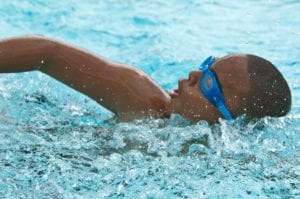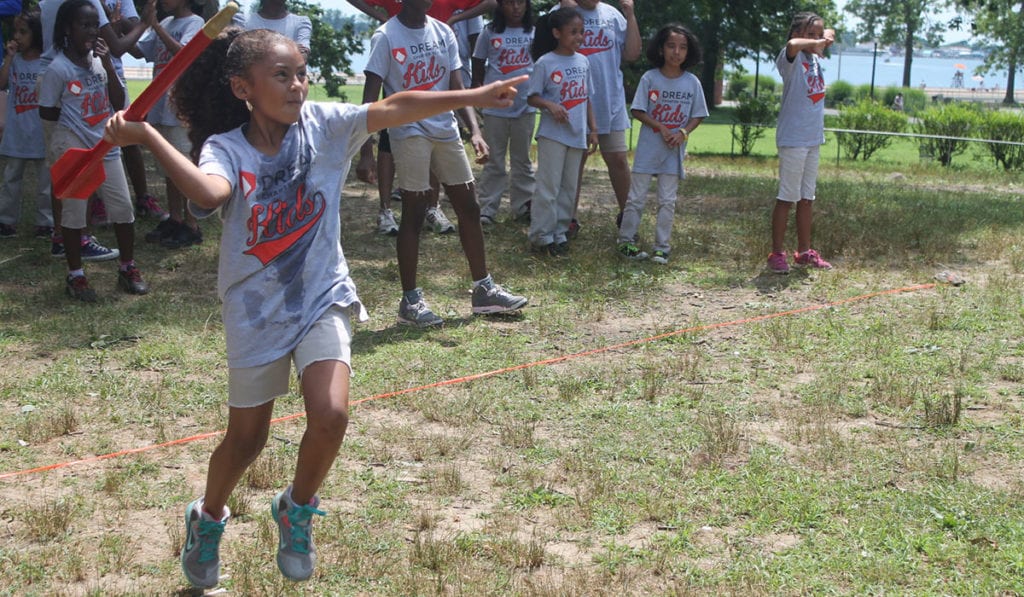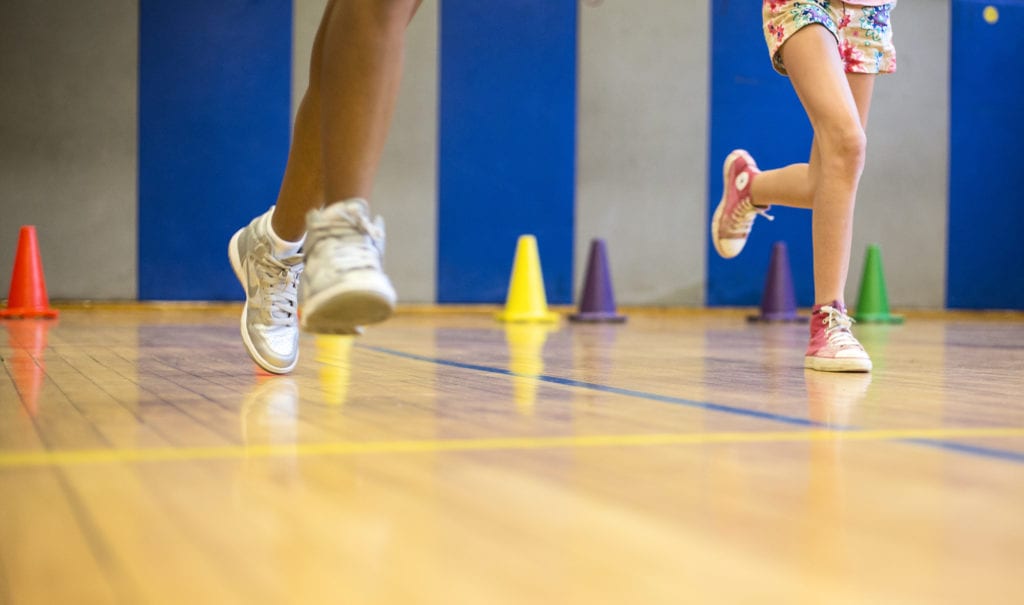One of the nation’s largest school districts, Miami-Dade County, Florida is also one of the most diverse—it serves students from all across the socioeconomic spectrum who speak more than 125 different languages and dialects. The educational goals of district leaders are clear: “Every single child that enters the doors of one of our over 350 schools receives a world-class education, including in the subjects of health and wellness.”
Though enrolling every school in Let’s Move! Active Schools and enhancing physical activity and education programming across the district was challenging, Dr. Jayne Greenberg, District Director of Physical Education and Health Literacy for Miami-Dade County Public Schools (M-DCPS), says that it was well worth it.
The link between physical activity and academic performance has long been a driving force in Greenberg’s educational philosophy. As a result, deciding to enroll the full district in Let’s Move! Active Schools was an easy choice.
“We knew that [Let’s Move! Active Schools] was the best effort for physical education and physical activity in the schools,” said Greenberg.
Becoming More Active
In Miami-Dade County, Let’s Move! Active Schools has inspired innovation, enabled district and school leaders to respond to student interests, and provided a framework to empower teachers, all of which have come together to make M-DCPS an active district. To make this transformation possible, Greenberg has written grants, held grant-writing workshops for teachers, and built partnerships with local businesses and community agencies.
The students’ excitement and progress keep her motivated. “The kids really understood that they needed to make changes in their lifestyles and appreciated the opportunity to do it in a fun way,” she said.
After surveying teachers and students to gauge fitness program interests, Greenberg diversified the options for activity to cater to their different fitness levels and preferences.
“We didn’t take away team and individual sports, that will always be the mainstay,” she explained, “but we’ve listened to the students and faculty, adding activities they want.”
For example, M-DCPS added a “fitness focus” and wellness centers have become popular hubs for students and staff to exercise during the day. The district also expanded their watersports program, taking advantage of the region’s natural resources. Increased student interest has, for Greenberg, been indicative of the programs’ success. “By implementing and creating quality physical education programs, we reengaged the students who were disengaged,” she said.
To maintain interest, Greenberg is constantly looking for opportunities to improve programming.
“Every year I try and add something different to what I’m doing in our schools,” she explained.
A self-proclaimed fan of active gaming, Greenberg has found innovative ways to incorporate technology into physical activity programming and increase student engagement. Using material from Jammin’ Minutes, Greenberg oversaw the creation of a library of physical activity breaks attached to Quick Response (QR) codes, which have been throughout the school. These have been a hit with students, who use IPADS and other digital devices to scan QR codes during recess time, and teachers, for whom this library has made classroom physical activity breaks easier than ever before.
To reach her goal of activating students, Greenberg considers teachers to be critical allies.
“We’ve really worked on developing programs that can be embraced by the teachers,” she said.
To build support among teachers and increase buy-in, Greenberg enlisted the Parent Teacher Association (PTA) to lobby teachers and disseminated research showing that active kids perform better academically.
“The best thing that came about was the Institute of Medicine report that tied physical education and physical activity to academic performance,” she said. “Our school community understood that it was critical that we could not afford to take [physical activity] out of the schools, but rather that we needed to find ways to enhance it.”
Providing ongoing support, including grant-writing workshops, to teachers is crucial in maintaining stellar physical education and physical activity programs.
“Empowered teachers are, in Greenberg’s eyes, the key to longevity. “Our sustainability and strategic plan is two-fold,” said Greenberg. “One, empower teachers to be leaders, and two, continuously look for the quality programs to implement in our schools.”
Moving More Means…
As a result of increased opportunities for physical activity and improved physical education programming, Greenberg and her colleagues see improved physical fitness levels in students across the district. Among older students, wellness centers have been a particularly successful tool for improving both fitness and self-image. For Greenberg, these results are indicative of success.
“The most important thing for us is seeing an increase in fitness and a decrease in BMI, so that’s been a big proponent that our physical education programs are working,” she explained.
Students’ increased fitness has had a positive effect on athletics. “Our athletic coaches have become better physical education teachers,” said Greenberg. “Our coaches feel that their jobs are easier because now they only have to develop higher-level skill and strategy. Kids are fitter, so they don’t have to worry as much about conditioning.”
Perhaps the crowning achievement for active M-DCPS, though, has been the success of the “I Can Do It, You Can Do It” program.
“We’ve been implementing it for ten years, and it’s become just an incredible program,” said Greenberg. “Last year we gave out 1,300 Presidential Active Lifestyle Awards to our students with autism, visual and hearing impairments, and physical or intellectual disabilities. This year, by working with the Special Olympics, the district is anticipating about 2,000 students will earn their Presidential Active Lifestyle awards.”
Particularly exciting to Greenberg has been the impact on attendance rates.
“Through a foundation grant, M-DCPS adapted physical education teachers fitness-tested 150 students with disabilities every nine weeks and found was that the more fit the students became throughout the school year, the less absent they were from school,” she said. “That’s a huge finding.”
Furthermore, Greenberg and her colleagues have observed positive results—including a reduction in BMI and an increase in the number of students achieving pass rates on all six Fitnessgram assessments—across their student population, including in students with disabilities.
Words to Move By
- Physical education teachers and physical activity champions: Don’t stay the “best kept secret” in your school! It’s not bragging—it’s being recognized for what you’re doing. Step up and share what you are doing with principals, parents, students, and staff.
- “Everyone says, ‘how can we afford to do this? We can’t fit it into the school day.’ But it does fit into the school day, it doesn’t cost any more money, and the real question is, can you afford not to do this? We know that the health of our students directly impacts their academic performance—we just have to show people that active kids learn better.”



